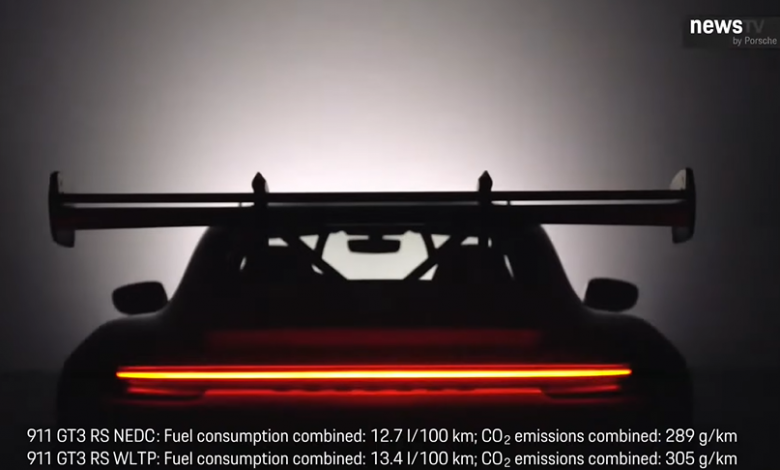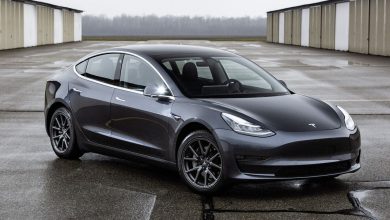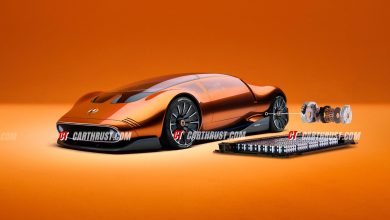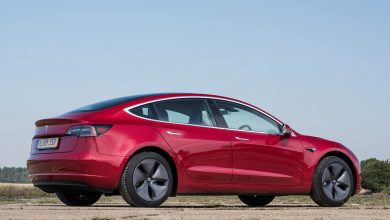
The new 911 GT3 RS was unveiled yesterday in a livestream presented by 2-time Le Mans race winner Patrick Long and Andreas Preuninger, head of the Porsche GT line.
In the first look, the car looks stunning and visibly beefed up with distinctive bodywork and aero packages. Porsche engineers have really gone out of their way to emphasize most of their efforts on the aerodynamics of the car. According to Preuninger, it is a street car, but built mainly for the race track.

New Aero Package
It gets air outlets all around, specifically on the 2-scooped bonnet and the front fenders. An outlet has also been added behind the front wheels in order to streamline the airflow as much as possible. Considering this track legend has enormous brakes, it needs apt cooling for them as well which is why we see more inlets than ever before. Due to this, the car no longer gets a luggage compartment. Beneath the car, active front wings have been added on both sides which are adjustable to 180 degrees.

The first thing one notices is the large rear wing, which looks as if taken out of an F1 car. Well, it kinds is. It also gets a proper Drag Reduction System (DRS), where at the touch of a button the flaps open up at high speeds to reduce drag by 30%! Porsche are already on it to showcase their F1 entry. Surely the car has been through rigorous wind tunnel testing and it has paid off. The car is able to generate a massive 860 kg of downforce at 285 kmph, double than its predecessor.

A Lightweight Carbon-fibre diet!
No stone was left unturned to achieve the high performance that the car delivers. Nearly all components of the car are made of light-weight materials and carbon fibre. These include the roof, the ducktail, the hood and even the doors! The car stands with a weight of 1450 kg. The Clubsport package, which came as an option in the 2018 model, now comes as standard. This includes 6-point seatbelts and steel rollover bars. The Weissach package, which includes carbon-weave finish of the roof, hood and the rear wing, remains available as an extra.
Performance Specs
Porsche has retained the same 4L flat-6 engine from the 2018 variant, but juiced up with tweaked cams and different cylinder heads. The sounds from this one will also probably not resemble the dyson vacuum anymore but for Europe, the rev limiters might just keep it the same. This is one of those rare disadvantages of a flat-6 from Porsche. But, knowing how quick it is off the line, not many supercars or even EVs will be able to keep up to listen to its sound anyway! The flat-6 enables the car to produce 525 hp, 15 hp more than the previous generation. The engine is linked to their established 7-speed PDK gearbox for the ultimate driving experience. The driver too gets all the important features to eke out the maximum out of the car when on the track, like adjustable traction control, differential and brake balance, all of these toggles present on the steering wheel, just like a racecar.

As far as interiors go, it remains basic, with bucket seats, with a roll-cage behind the cabin. The instrument cluster and other technical integrations are performance-centered and have been been added for improving driving performance offloading as much information as one might need and more. This is expected out of a car, which is built for the race track. Or… built around the Nurburgring! The driver gets Normal, Sport and Track driving modes, which change the suspension and the differential settings accordingly.
[tie_slideshow]
[tie_slide]  [/tie_slide]
[/tie_slide]
[tie_slide]  [/tie_slide]
[/tie_slide]
[tie_slide]  [/tie_slide]
[/tie_slide]
[tie_slide]  [/tie_slide]
[/tie_slide]
[tie_slide]  [/tie_slide]
[/tie_slide]
[/tie_slideshow]




